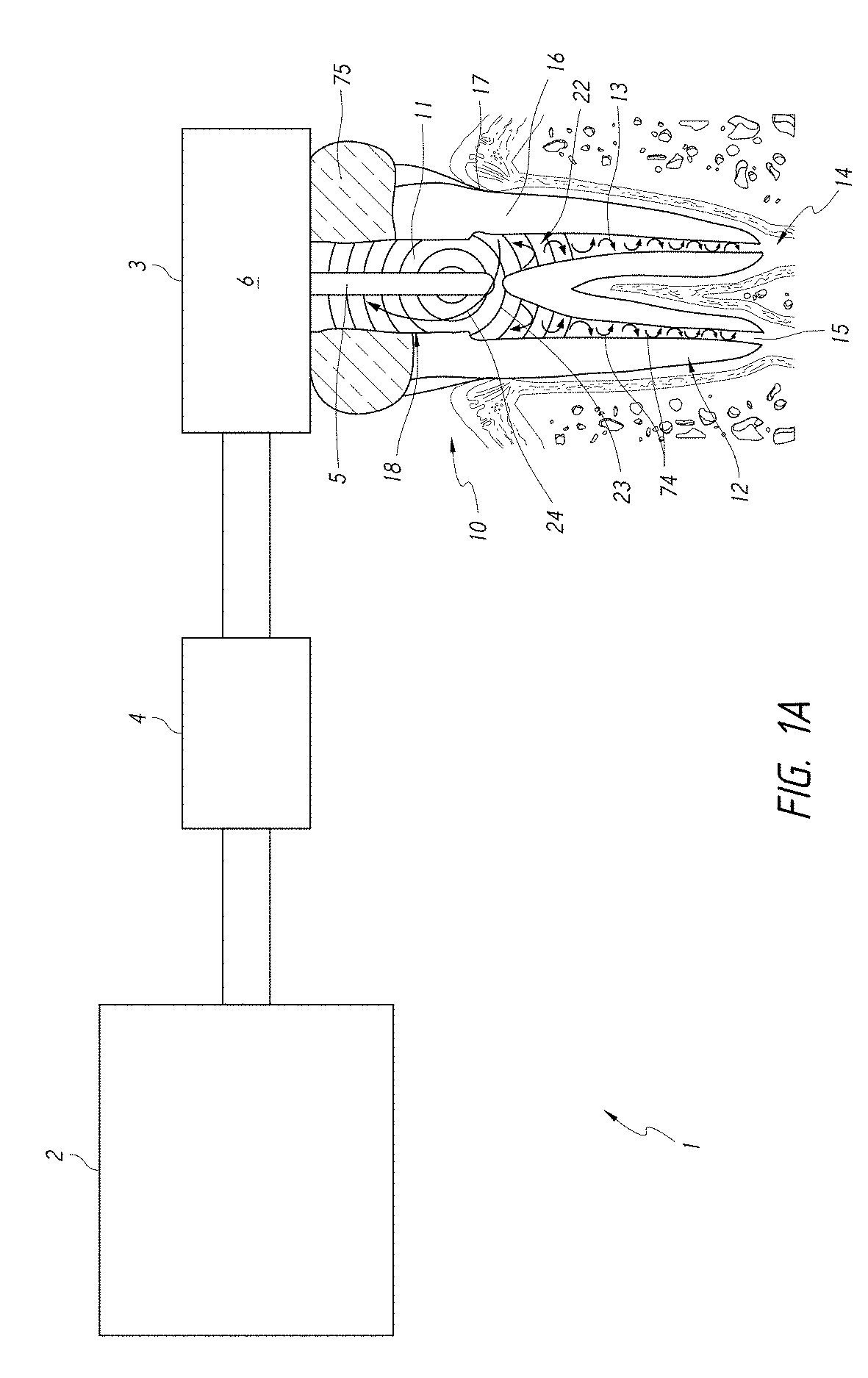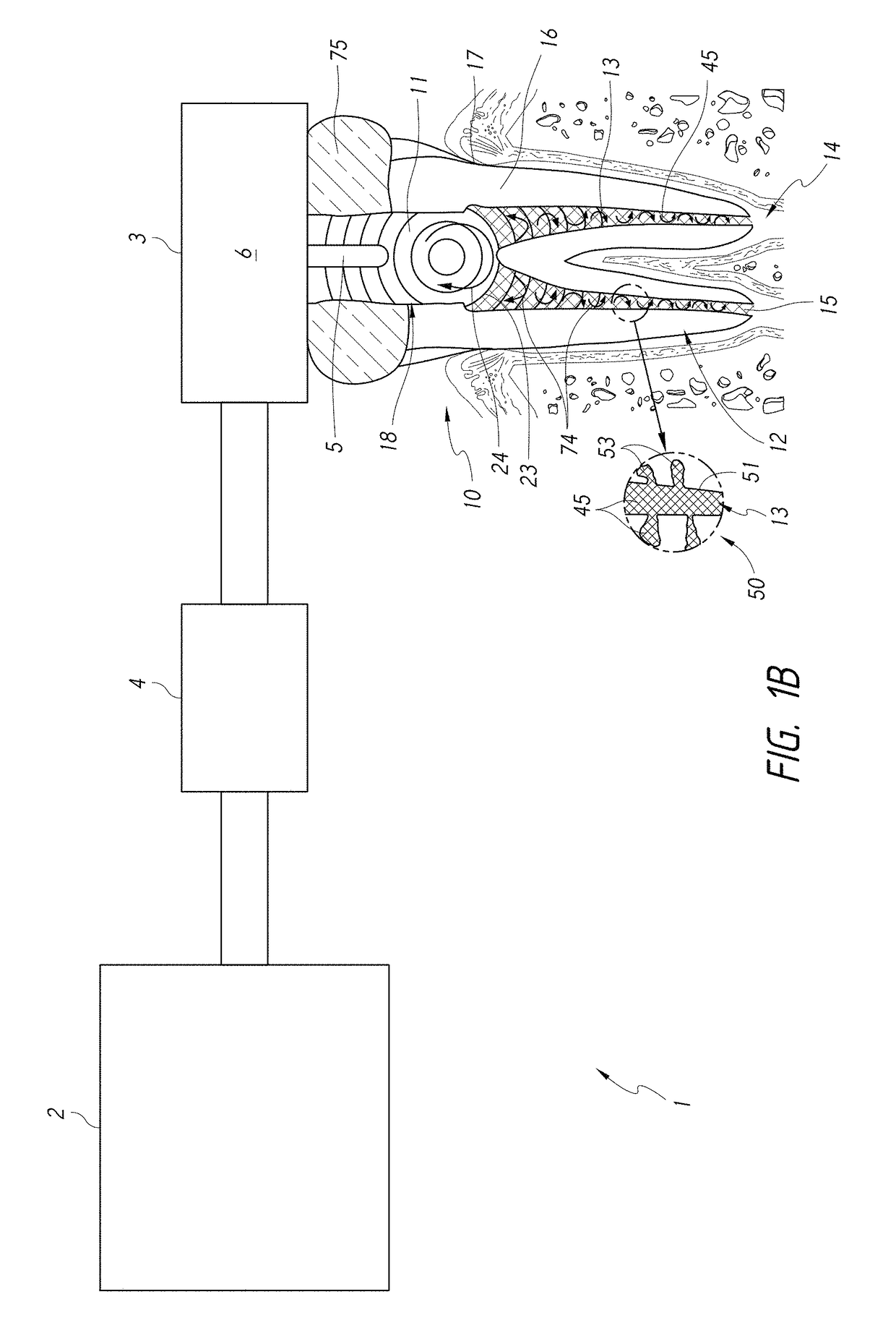Apparatus and methods for filling teeth and root canals
a technology for filling teeth and root canals, applied in the field of dental and endodontics, can solve the problems of difficult to ensure that the filling material fully obturates the treatment region of the tooth, and the procedure is often painful for the patien
- Summary
- Abstract
- Description
- Claims
- Application Information
AI Technical Summary
Benefits of technology
Problems solved by technology
Method used
Image
Examples
Embodiment Construction
I. Overview of System and Methods
A. Overview of Various System Components
[0041]FIG. 1A is a schematic diagram of a system 1, in accordance with the embodiments disclosed herein. The system 1 shown in FIG. 1A may be configured to perform various types of treatment procedures, including, e.g., cleaning treatments, obturation treatments, restoration treatments, etc. In the embodiment shown in FIG. 1A, the system 1 is illustrated as being coupled to (e.g., positioned against in some arrangements) a tooth 10 that is a molar tooth of a mammal, such as a human. However, the tooth 10 may be any other suitable type of tooth, such as a pre-molar, bicuspid, incisor, canine, etc. Furthermore, the system 1 shown in FIG. 1A can include components configured to remove unhealthy or undesirable materials from a tooth or surrounding gum tissue, for example, a root canal 13 of the tooth 10. Thus, in the embodiment of FIG. 1A, the system 10 is configured to clean the tooth 10.
[0042]The tooth 10 include...
PUM
 Login to View More
Login to View More Abstract
Description
Claims
Application Information
 Login to View More
Login to View More - R&D
- Intellectual Property
- Life Sciences
- Materials
- Tech Scout
- Unparalleled Data Quality
- Higher Quality Content
- 60% Fewer Hallucinations
Browse by: Latest US Patents, China's latest patents, Technical Efficacy Thesaurus, Application Domain, Technology Topic, Popular Technical Reports.
© 2025 PatSnap. All rights reserved.Legal|Privacy policy|Modern Slavery Act Transparency Statement|Sitemap|About US| Contact US: help@patsnap.com



